Xiaozhou Village and Redtory
On Saturday I finally went and explored Xiaozhou or "the art village". This cosy little "semi-rural" village is wonderful to walk around in with its little studios and cafés. It's about an hour's bus ride from down-town Guangzhou. It seemed appropriate visiting an art village on that day since it was Easter back home and during Easter a lot of artists on Österlen display their work.
"On the southern outskirts of the city lies a centuries-old village called Xiaozhou, near University Town. It has become the new cultural center of Guangzhou. Xiaozhou Village features classical Cantonese community landscapesby water, including canals, well-kept ancient buildings, bridges and local folkways.
More and more artists, writers, photographers and college students live, work and visit the scenic Xiaozhou Village. The blending of artistic creativity with the local customs and countryside architecture has sparked an interesting community in this historic enclave, creating a wonderfully romantic place to idle away a day." Source

The local museum

An artist's studio

The village temple
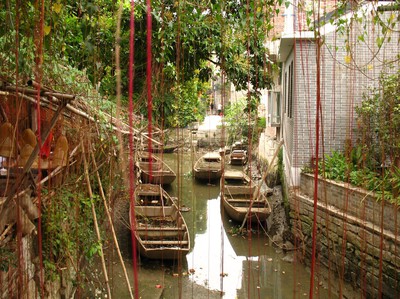
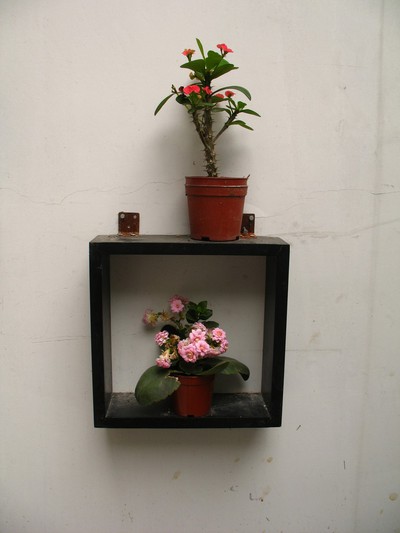

One of the many small and cosy cafés around.


The one and only, Chairman Mao.

Temporary bridge is being repaired.

Unexpected find of Swedish souvenirs.


An old classroom? Now part of a café.

What we all need to do more.

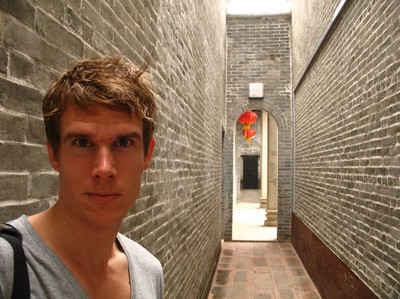

Cosy backgarden

Watergate.
The following photos are from Redtory, which is a "creative area promoting contemporary art" that is is located in some old factories. It's still being built but already it's become a very hip and cool area to hang out at.
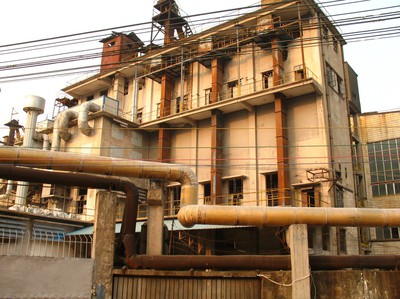
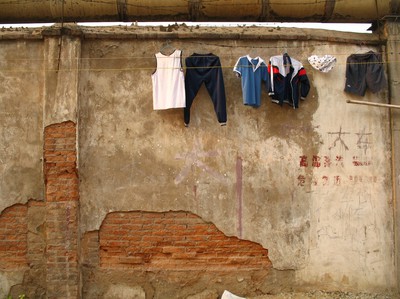






Saturday night was spent in one of the fashionable restaurants in Redtory, celebrating Michaela's birthday, the art teacher at school. The food was ok, especially considering the price but what was really gained praise was the Long Island Ice teas.
"On the southern outskirts of the city lies a centuries-old village called Xiaozhou, near University Town. It has become the new cultural center of Guangzhou. Xiaozhou Village features classical Cantonese community landscapesby water, including canals, well-kept ancient buildings, bridges and local folkways.
More and more artists, writers, photographers and college students live, work and visit the scenic Xiaozhou Village. The blending of artistic creativity with the local customs and countryside architecture has sparked an interesting community in this historic enclave, creating a wonderfully romantic place to idle away a day." Source

The local museum

An artist's studio

The village temple



One of the many small and cosy cafés around.


The one and only, Chairman Mao.

Temporary bridge is being repaired.

Unexpected find of Swedish souvenirs.


An old classroom? Now part of a café.

What we all need to do more.



Cosy backgarden

Watergate.
The following photos are from Redtory, which is a "creative area promoting contemporary art" that is is located in some old factories. It's still being built but already it's become a very hip and cool area to hang out at.








Saturday night was spent in one of the fashionable restaurants in Redtory, celebrating Michaela's birthday, the art teacher at school. The food was ok, especially considering the price but what was really gained praise was the Long Island Ice teas.
Eating dogs?
Guangxiao Temple
Last weekend I was wandering around the Guangxiao Temple or The Bright Filial Piety Temple.
"The Bright Filial Piety Temple is the oldest Buddhist temple in Guangzhou, with a history dating back more than 1,700 years. It is said that it has a longer history than the city of Guangzhou.
The temple holds an important place in Buddhist history. Huineng, the sixth master of the Zen Sect of Buddhism, had his hair cut and was initiated into monkhood there. In the temple there is also a pagoda where Huineng's hair was buried.
The architecture of the temple and cultural relics provide insight into the history of Chinese Buddhism, culture, and architecture as well as the local history of Guangdong Province." - source
I was there a few days ahead of the tomb sweeping holiday I mentioned in my previous post, so it was busy and the burning of paper objects had already started.
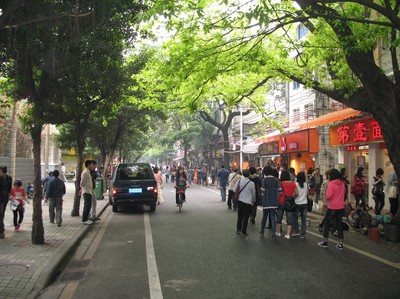
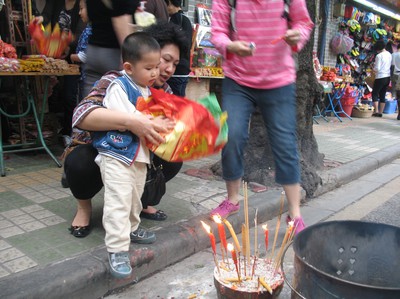
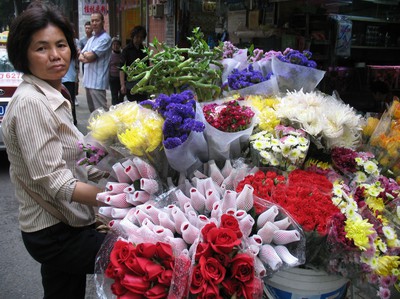



A wheelchair with built-in karaoke!

These guys doesn't seem to be too fond of being worshipped.


Throwing coins into this "thing" brings luck.


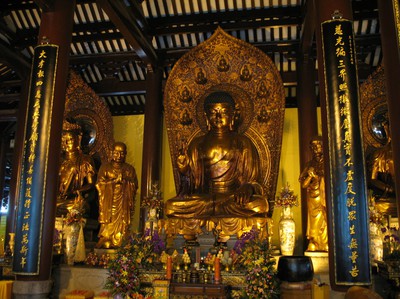
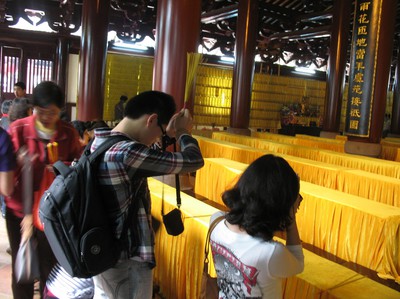

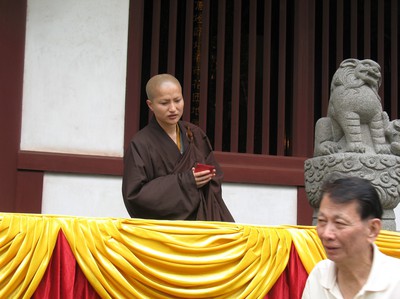








I didn't know Pepsi made sport clothes..

Delicious ice cream!
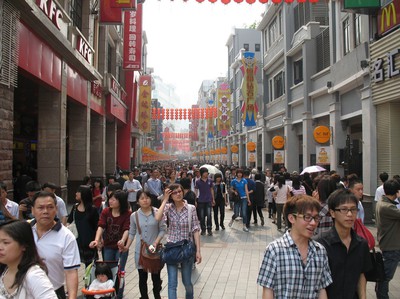
A few Chinese were out on the shopping street Shangxia Jiu Lu.
"The Bright Filial Piety Temple is the oldest Buddhist temple in Guangzhou, with a history dating back more than 1,700 years. It is said that it has a longer history than the city of Guangzhou.
The temple holds an important place in Buddhist history. Huineng, the sixth master of the Zen Sect of Buddhism, had his hair cut and was initiated into monkhood there. In the temple there is also a pagoda where Huineng's hair was buried.
The architecture of the temple and cultural relics provide insight into the history of Chinese Buddhism, culture, and architecture as well as the local history of Guangdong Province." - source
I was there a few days ahead of the tomb sweeping holiday I mentioned in my previous post, so it was busy and the burning of paper objects had already started.






A wheelchair with built-in karaoke!

These guys doesn't seem to be too fond of being worshipped.


Throwing coins into this "thing" brings luck.














I didn't know Pepsi made sport clothes..

Delicious ice cream!

A few Chinese were out on the shopping street Shangxia Jiu Lu.
Tomb Sweeping Day
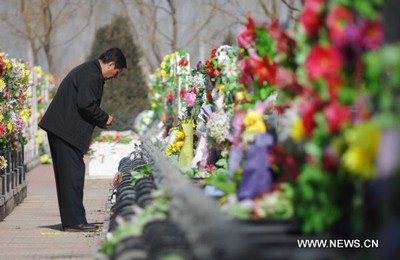
We had a day off from school this Tuesday as it was the Chinese holiday of Qingming or Tomb Sweeping Day. It's a day when families go to the burial sites of their ancestors and relatives to sweep the tombs and offer gifts in the form of tea, food and paper objects, which are usually burned. The burning of paper objects are especially interesting, the burning of "paper money" is widespread but in today's digital age it's becoming more common to burn some "paper Ipads" or "paper laptops", because after all they might not have any electronics retailer in heaven so what are they going to do what all that "paper money"?


Paper Ipads

Paper laptop

Paper money
Dongshuan
First of all I must inform you that luckily the government of China has not decided to allow internet traffic only on odd or even days as I made a post about on April's fools day. It would be interesting to see what would happen though, not only in China but the whole world. We take the functionality and freedom of internet very much for granted.
But enough about that, this Saturday I went on another exploration trip to a Dongshuan, an old part of Guangzhou where the military officers and politicians used to settle. It was an gorgeous day, sunny with 26 degrees and now all the flowers and cherry blossoms have started to bloom. Here are some photos.


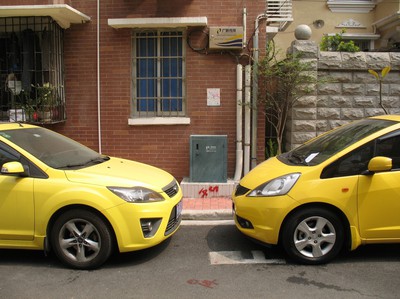


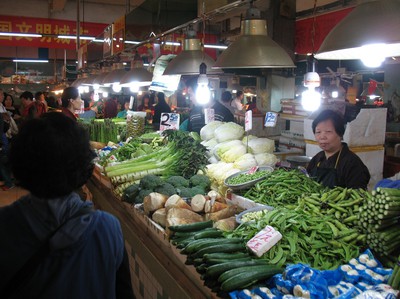






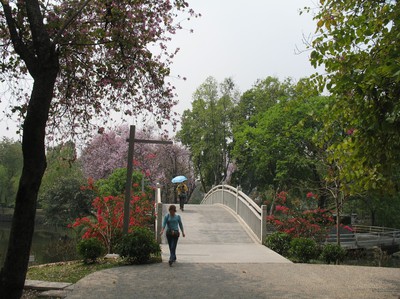



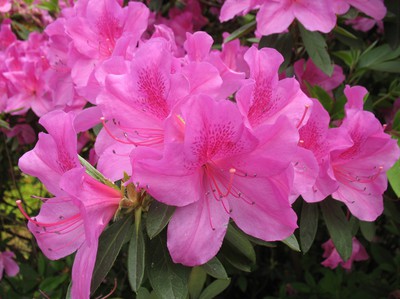


But enough about that, this Saturday I went on another exploration trip to a Dongshuan, an old part of Guangzhou where the military officers and politicians used to settle. It was an gorgeous day, sunny with 26 degrees and now all the flowers and cherry blossoms have started to bloom. Here are some photos.



















China will restrict internet usage
As well known China has a troubled relationship to the internet, behind the Great Firewall of China websites such as Facebook, Youtube, Twitter, the New York Times, LinkedIn, IMDB, Flickr, Blogspot and Wikileaks are banned and one is unable to visit them unless one uses a VPN service. Now the Chinese government takes further steps to control and limit its citizens' usage of internet, it will introduce the odd-even rule that has worked well in curbing increasing traffic in larger cities.

The odd-even rule usually applies to car's licence plates so if you have an even number on your licence plate you are only allowed to drive that car on even dates, and cars with odd number on the licence plate can only be driven on odd dates. The odd-even rule will now apply to IP-addresses, if you have an even IP-address you will only be able to use the internet on even dates. There has been an outcry among young Chinese netizens but so far the policy makers stand firm. The rules are expected to be enforced by the ISPs next month.


The odd-even rule usually applies to car's licence plates so if you have an even number on your licence plate you are only allowed to drive that car on even dates, and cars with odd number on the licence plate can only be driven on odd dates. The odd-even rule will now apply to IP-addresses, if you have an even IP-address you will only be able to use the internet on even dates. There has been an outcry among young Chinese netizens but so far the policy makers stand firm. The rules are expected to be enforced by the ISPs next month.

